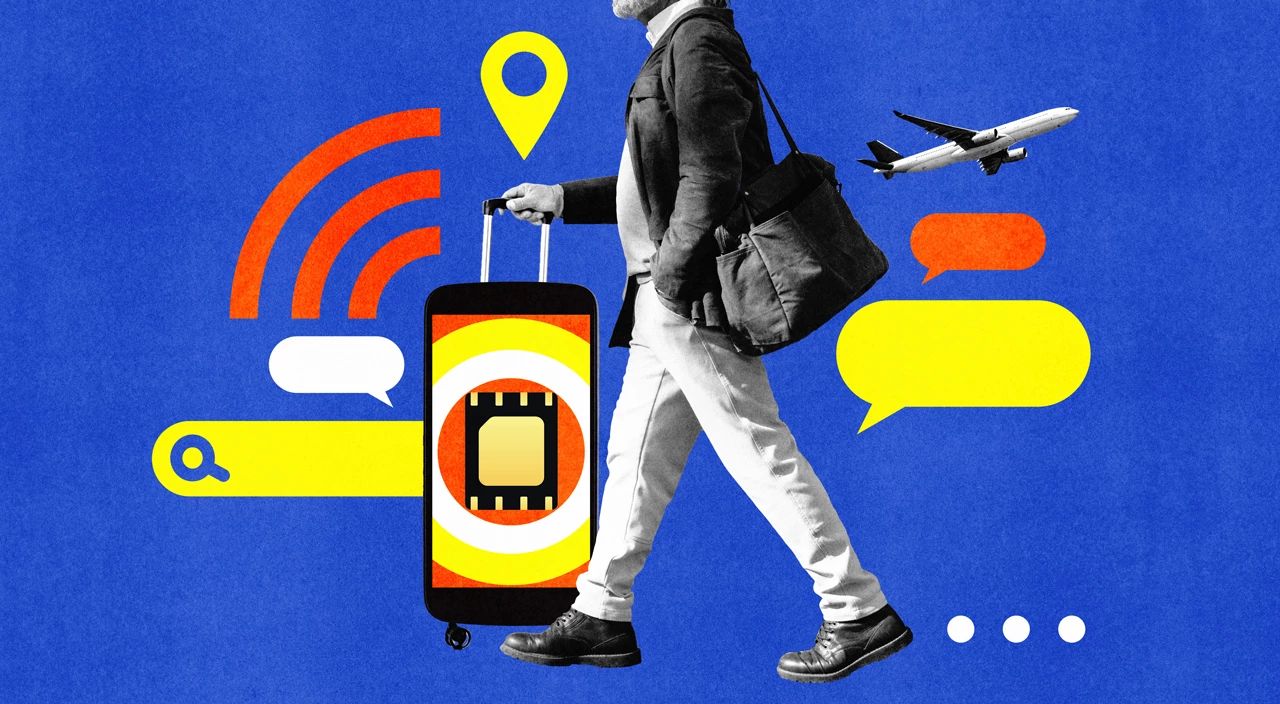AARP Hearing Center


In this story
Shop before you travel • Determine eSIM compatibility • Pick a plan • Connect your eSIM • Decide about calls, texts
The best place to shop for cellphone service is in a comfortable chair at home.
The worst may be on your feet, jet-lagged and on the other side of a language barrier. Yet traditionally that’s been the way to get cheap phone service overseas.
But the advent of eSIMs for smartphones and of companies offering service in multiple countries via a quick download means international travelers no longer have to shop for a prepaid subscriber identity module (SIM) card after clearing customs. While buying a physical SIM card requires ejecting your regular SIM card and safeguarding it until you go home, eSIM-compatible phones generally let you use both a digital and physical SIM.
If your carrier provides free or cheap texting or calling overseas but charges more for data, you can buy a cheap eSIM for data while keeping your home SIM for texts and calls. In effect, you can download your cake and text about it too.
Can your smartphone handle an eSIM?
You do need to undertake some pre-departure research, starting with verifying that your phone is eSIM ready.
1. Your device must be unlocked for use with other carriers, which if you bought it from your wireless service usually means it must be paid off. One exception: Verizon unlocks phones it sells after 60 days.
2. Next check your device’s compatibility. Many older phones and some newer but cheaper smartphones don’t support eSIMs.
The picture is simpler with iPhones: Apple began supporting eSIMs with 2018’s iPhone XR, iPhone XS and iPhone XS Max. Among Android phones, compatibility can vary by model and by country; for example, the U.S.-model Samsung Galaxy S20 doesn’t support eSIM while models sold in other countries do.
Most eSIM providers let you check your phone’s compatibility early in the ordering process, but you can also verify the readiness of an Android phone or older iPhone with the old-school method of dialing. Enter *#06# into your phone app. If the resulting set of barcodes includes one with an “EID” code above it, you’re set.
A searchable database can help you choose a plan
The most confusing part of using an eSIM may be how many choices you have. The database at eSIMDB lists 75 providers for Europe that offer 2,215 data plans. Other databases include eSIM.net, eSIMsCompare, eSIMradar and eSIMs.io.

































































More From AARP
6 Ways to Secure Your Phone After Trip Abroad
U.S. agents can search digital devices legally upon your reentry
How to Navigate Smartphone Apps in Your Car
Android Auto, Apple CarPlay give drivers numerous options
10 Tips for Stunning Vacation Photos on Your Smartphone
Travel light. Keep your stand-alone digital camera home